
In dancer pose (Natarajasana), we honor the attentiveness of students who studied here and the strength and deliberation of the people to keep a culture, a language and a tradition alive…
This is the heart of the Monumental Complex of the Albanian League of Prizren, an ensemble of knowledge buildings that initially served the purpose of teaching rooms and libraries, and later on were used as administrative offices for the Albanian League of Prizren in the 19th century. Much of the complex has been demolished in the 50s and 70s, with the intention of "modernizing" the city, a recurrent issue with which all towns in Kosovo have faced. Still, some remnants of handwritten documents, antique weapons, and paintings of historical and political figures of the league, have managed to escape the claw of 'modernization' and you're gently taken back to the old days once you step inside the complex.
1.
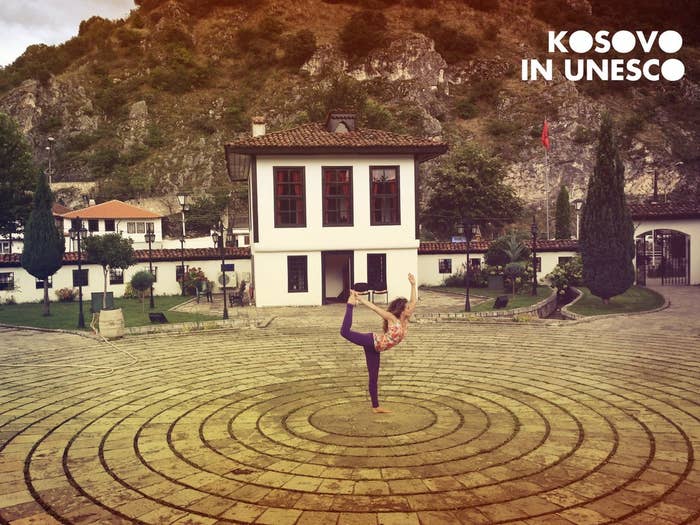
2.
In this Reverse Warrior Pose (Viparita Virabhadrasana), we open our hearts to all the lives lost to protect cultural heritage and call upon UNESCO to open its doors to Kosovo, so no souls should ever be lost again for the protection of creation…
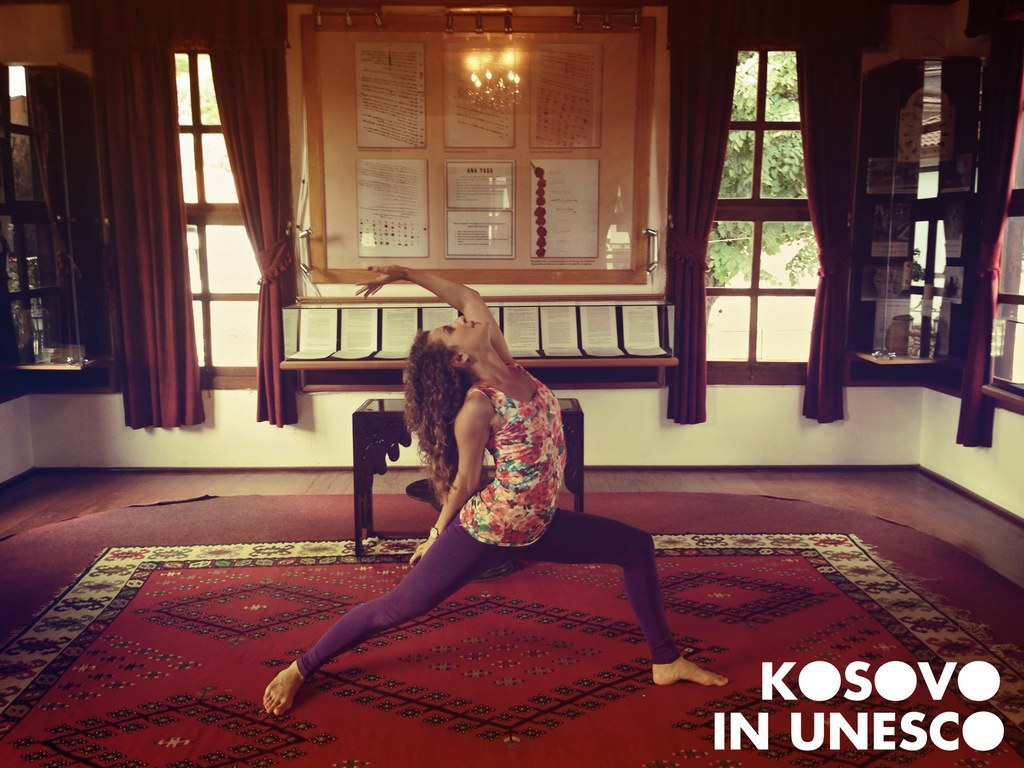
3.
Among the various traits of Prizren are numerous wells and ancient drinking fountains. We open our hearts in empathy through the Fish pose (Matsyasana) to honor the people of Prizren who remained resilient across centuries like a steady stream of water.

4.
Through these alleyways in Purvottanasana, we end up at the Musa Shehzade-Sheherzade House (Residential Building) in the "Old Saray" street.

5.
A feeling of kinship led me to this house….
While this was the first time visiting in person, the house had a familiar feel, as recalled from stories told by my father and uncle playing with their mother in this garden. A recognizable trait of this house are its high surrounding walls, which were built through a sound-proof technique in the early 19th century, as protection from the piercing-ears of foreign enemies. While today the house serves as the Ethnological Museum of Prizren thanks to its architectural and artistic values, it carries in it much political and economic history. The creator and owner, Musa Shehzade, aside from being one of the descendants of the family who built the first dervish tekkes in Prizren, also served as the first prefect of the town of Prizren, as well as the Leader of the Second League of Prizren in 1943, which was created for the purpose of protecting and unifying the ethnic Albanian territories.
Kneeled Warrior (Anjaneyasana): to honor those who work for peace through education, and for the continuation of traditions and protection of cultures.

6.
While his dedication to preserving the Albanian culture and identity, led to his murder, and the whereabouts of his ashes are unknown even today, we honor what has been left to us through his work with the Warrior III (Virabhadra) fierce warrior pose.
In the main room of the second floor, also known as "Oda" there are relics common of 19th century dwellings. The unique design of the helmet of the renowned Albanian national hero Gjergj Kastrioti (Skenderbeu), who fought for the Albanian cause during the Ottoman Empire, has been embellished as part of the three chimneys in this house, one in the ground floor, and two in the upper floors. What is astonishing about this creation is that displaying such ornaments distinct of the Albanian culture was prohibited during this era. Thus, through this veiled portrayal of identity, only authentic locals were capable of distinguishing the details of the helmet engraved on the upper portion of the chimney. To the rest, this seemed as only a continuation of the adorned woodwork of flowery ceilings, cupboards, and walls around the house.
7.
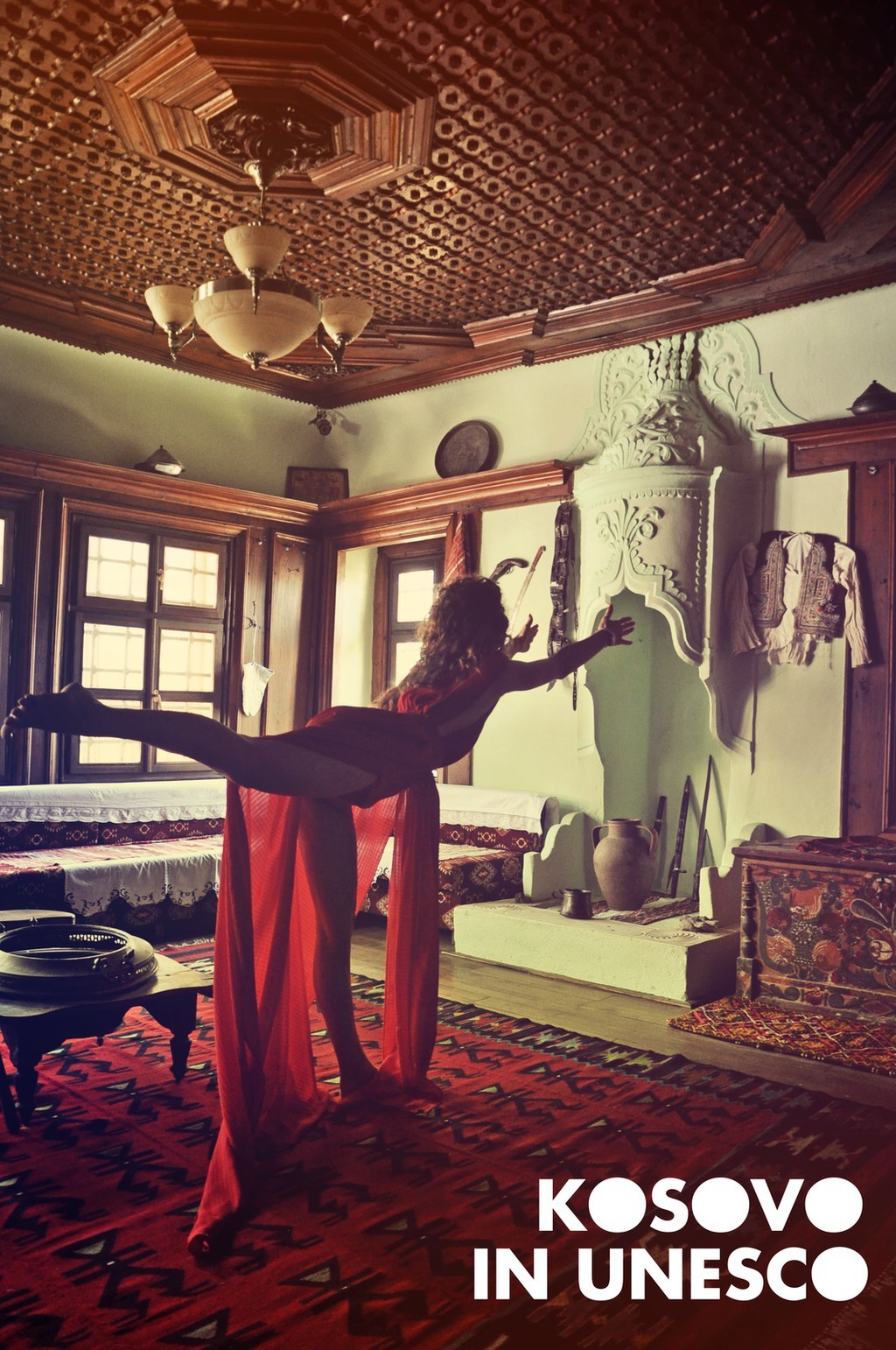
8.
After walking by the Tree of Marash, which is over 200 years old, we passed the Musa Shehu statue and the turbe (tomb) in Marash, the ruins of which yet need to be uncovered. Finally, we reached the Prizren castle.
Through the Half Moon Pose (Ardha Chandrasana), which is characteristic of improving proprioception, the sense of position in space, we call upon UNESCO to acknowledge Kosovo's position as a new member in the organization deserving of its place.
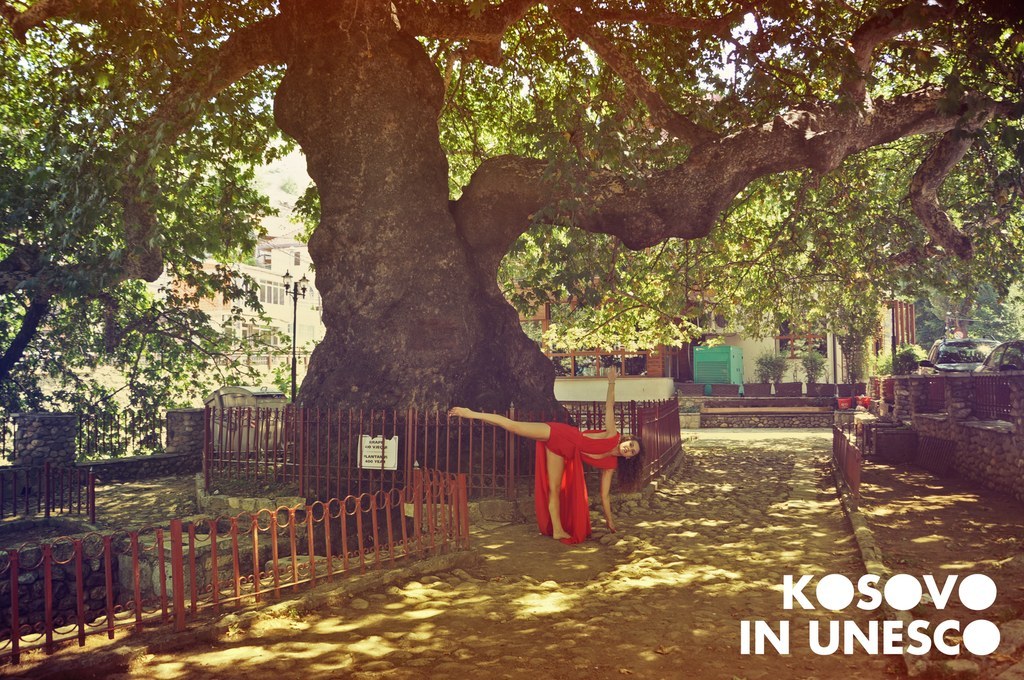
9.
We have been able to hear the voice of the wind speaking of the resilient castle of Prizren (Kalaja) all the way from the Byzantine era… The oldest texts that have been found to speak of the castle's beauty are in the "De aedificiis" (On Construction), from the Byzantine Chronicler Procopus of Cesar, who mentions the 'Petrizen Castle', as one of the forts renovated in ancient Dardania, an ancient Illyrian tribe, who are regarded as predecessors of today's Albanians (4th century). Every era shaped the personality of the Prizren castle differently. At times it was mainly draped with fences and fortified walls looking over the town as a way to protect the people and the territory. During the Ottoman Empire, it became home to the Hamam (public baths) and a mosque. While still in renovation, since 2010, it has been home to an open cinema, which shares documentary stories, at the "Dokufest" International Film Festival.
As the body unites in Wheel Pose (Urdhva Dhanurasana), we show gratitude towards those united through centuries who have preserved and prevented the destruction of beauty.
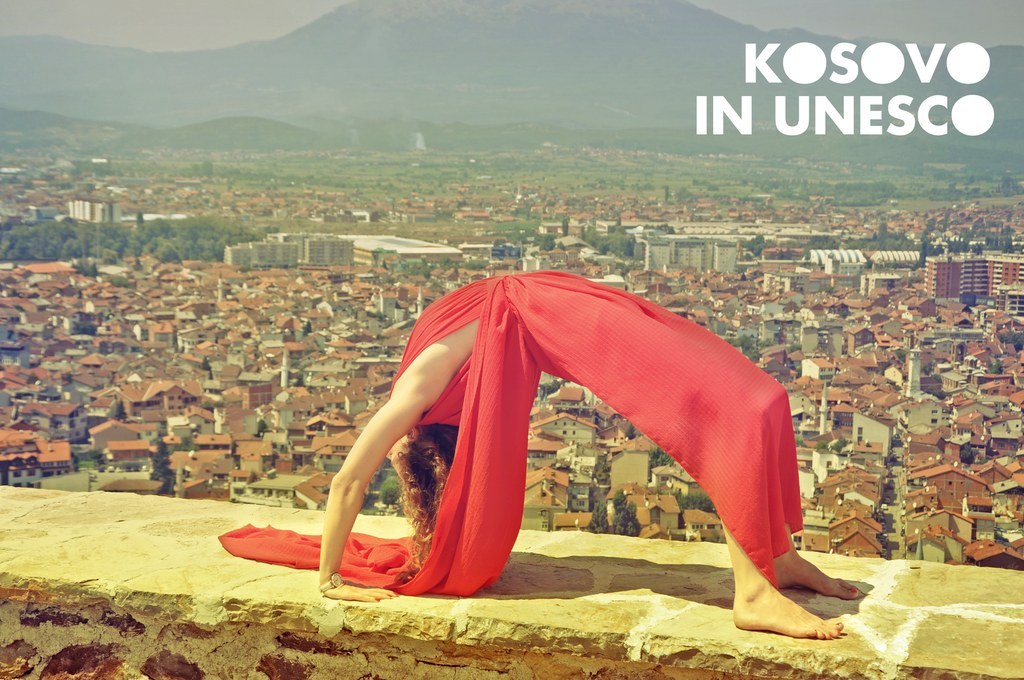
10.
In Warrior II Pose (Virabhadrasana II) we end our journey in Prizren:
Dear UNESCO, we stand at a crossroad. Open your arms to Kosovo. As a new member, Kosovo and its people will find the balance needed to educate, preserve and foster sustainable development and intercultural growth for a peaceful future.

11.
For more yoga in Kosovo, see the links below:
Watch a Journey of Branding through Yoga on TedxWomenPrishtina:
Dancing to the Rhythm of Yoga in Peja
Yoga in Gjakova, a salvage of the tradesmanship spirit of Kosovo
Country of Lost Souls

